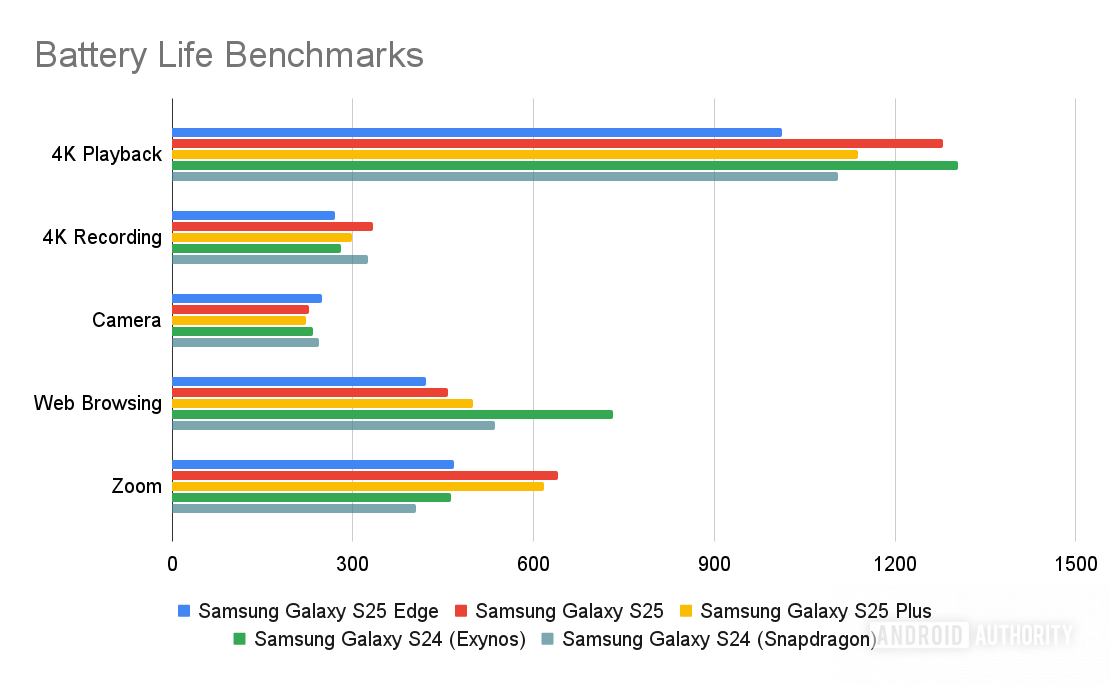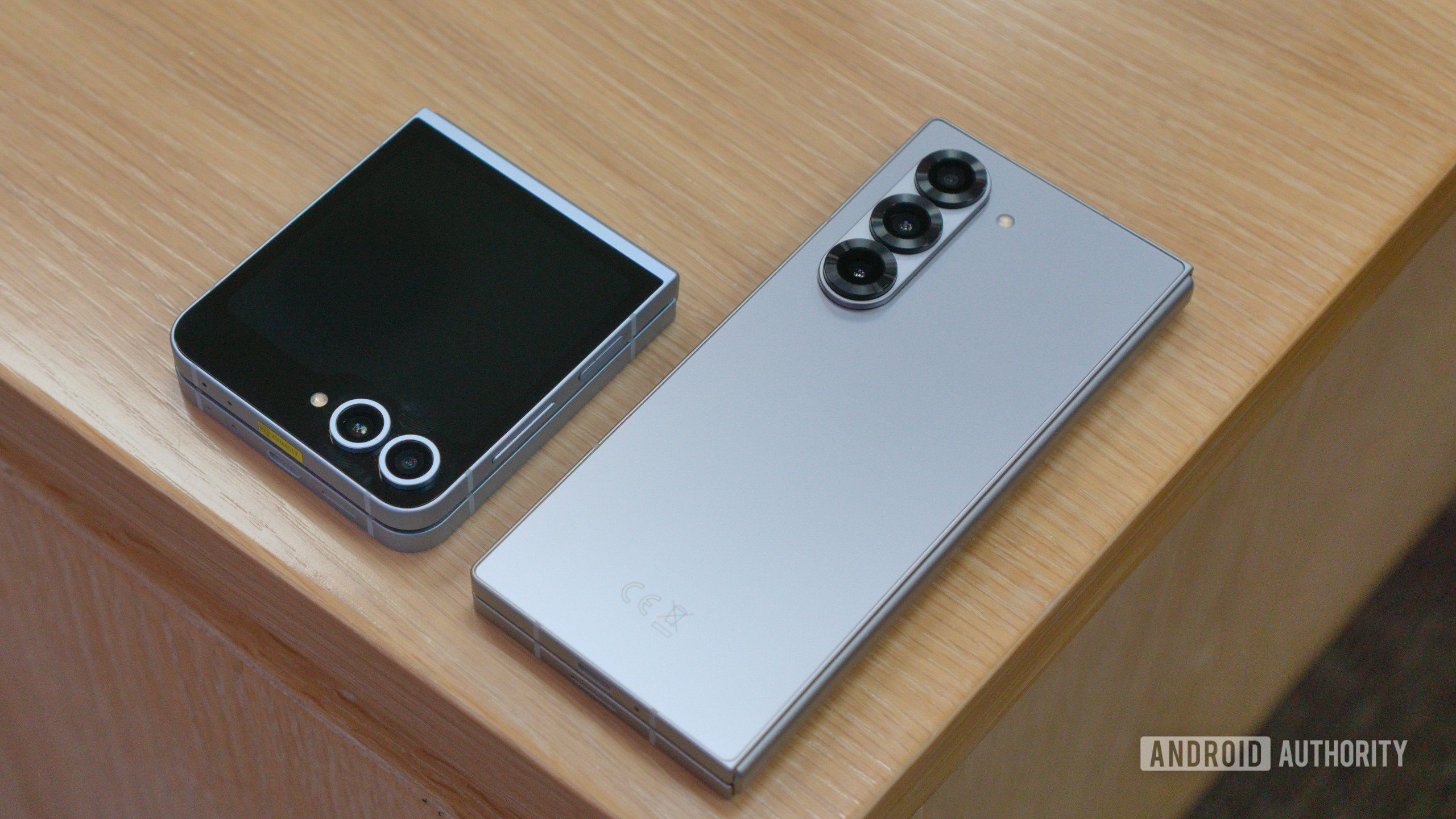
C. Scott Brown / Android Authority
When we first picked up the Samsung Galaxy S25 Edge, we marveled at its delicately thin frame. However, our wonder quickly turned to concern once we saw the phone’s 3,900mAh battery capacity. That’s not tiny, but it’s a pretty conservative cell for a 2025 flagship smartphone, especially one as tall and wide as the Galaxy S25 Plus.
For comparison, the S25 Plus houses a sizable 4,900mAh cell, while even the compact Galaxy S25 nudges ahead of the Edge with 4,000mAh. But it’s also worth noting that the Edge features a larger display with a higher QHD resolution and a more demanding 200MP camera — factors that could all draw more power than those in the regular S25.
Samsung itself claims the Edge should have battery life somewhere between the Galaxy S24 and S25, but our testing has found this to be rather optimistic. Let’s take a look at the results from our automated battery longevity tests, all conducted at a consistent display brightness of 300 nits. For comparison, we also tested both models of the S24, as well as the S25 and S25 Plus.

Robert Triggs / Android Authority
Unfortunately, the Galaxy S25 Edge underperforms across the board. It clocks fewer minutes than the Galaxy S25 in every test and fares worse than the Galaxy S24 series in most categories — except for our Zoom call test, where it beats the Snapdragon version of the Galaxy S24. It also matches the Exynos model in the 4K recording and Zoom tests. The only consistent result across the board is in camera capture time, where all phones performed similarly. Otherwise, the performance gap is significant and well outside the margin of error. The Edge’s battery life is clearly inferior to its siblings.
In fact, the Edge’s real-world battery life is far worse than the seemingly minor 100mAh difference with the compact Galaxy S25 would suggest. On average, I calculate a roughly 20% reduction in video recording and playback longevity compared to the regular S25, and 27% worse performance in Zoom call duration. Web browsing fared a bit better, with only about an 8% decline, but that’s still worse than the battery size would lead you to expect.
The Edge’s beefier specs drain the 3,900mAh battery even faster than the S25.
Software optimization may play a role, but the Edge’s larger, sharper display undoubtedly draws more power than the regular S25. Combined with the smaller battery, this is a recipe for disappointing screen-on time.

Ryan Haines / Android Authority
Setting aside the comparisons for a moment, let’s focus on screen-on time itself. Based on our tests, the Galaxy S25 Edge delivers about four and a bit hours of constant content capture, seven to eight hours of moderate use (like web browsing and video calls), and up to 17 hours of offline 4K video playback. These figures aren’t terrible in isolation, but fall an hour or two behind its siblings. And keep in mind that this is under ideal, out-of-the-box conditions. Add background tasks, heavy data use, or gaming, and things quickly deteriorate.
Cutting it fine is an understatement, there’s no headroom for aging battery health here.
Samsung has built the Edge with a battery capacity that clearly cuts it very fine for a full day of use. While the Galaxy S25 Edge might manage modest usage today, consider how it will perform after two or three years, especially at a price point of $1,100. A modest decline to 90% of its original battery capacity after two years could already spell trouble; a drop to 80% will have you reaching for a charger before the day is over.
Additionally, we noticed the thin metal frame heating up frequently during use, which not only accelerates battery degradation but can also cause the battery to discharge inefficiently and increase self-discharge. This might explain why the phone seems to perform particularly poorly in demanding tests, like our Zoom call, and why Samsung has stuck to sluggish 25W charging again.
Either way, it didn’t take a crystal ball to predict battery concerns with the Galaxy S25 Edge, but now we have the data to prove it. If you plan to keep your next phone for a few years, you might want to steer clear of Samsung’s ultra-thin flagship.


